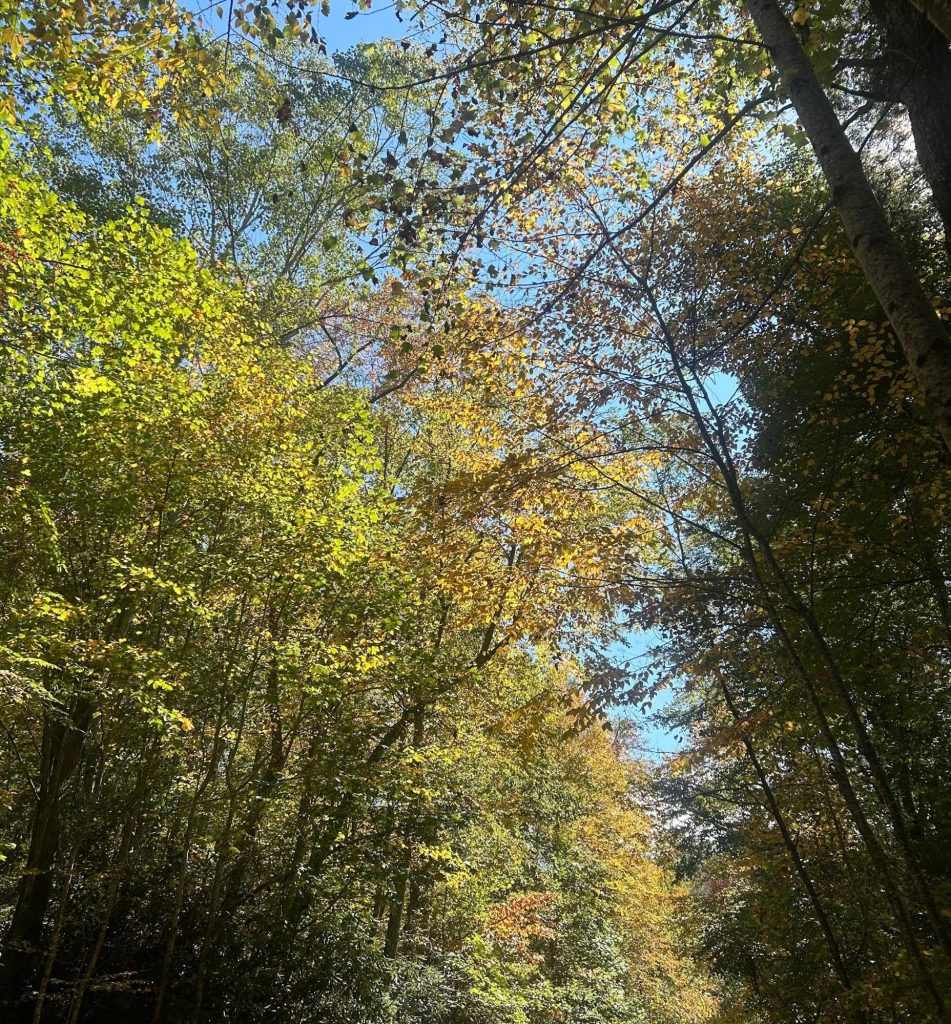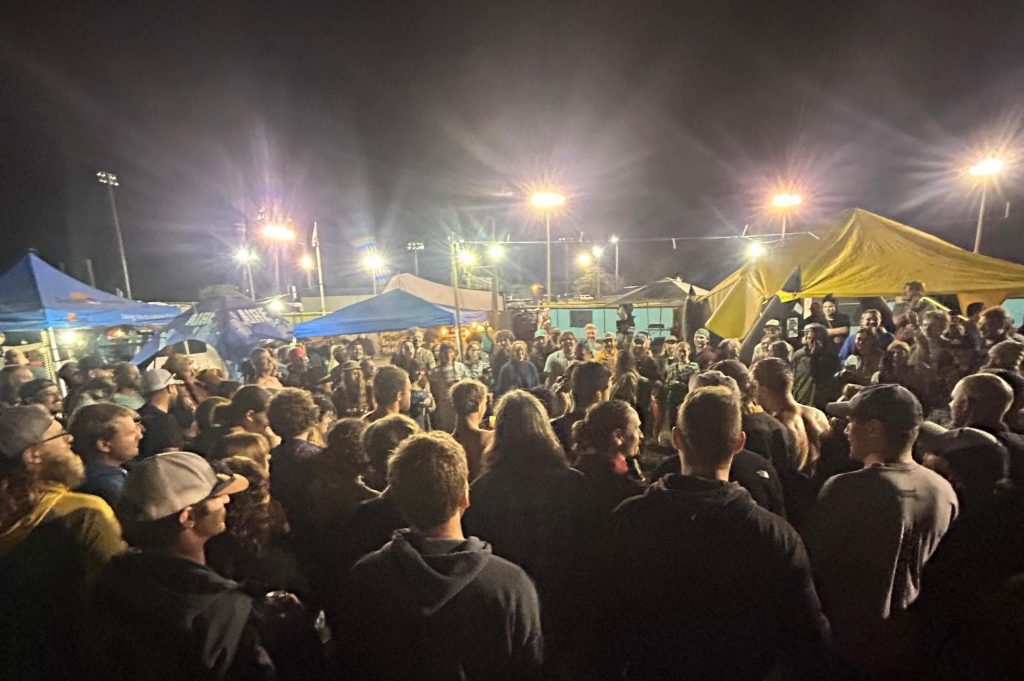For 45 weeks out of the year, the Gauley River runs as most of its cousins in the eastern United States do: as a mere trickle compared to its natural flow, impounded by the dams and weirs that resulted from the country’s insatiable thirst for economic growth, drinking water, and electricity. But for seven weekends of the year, starting in early September, The Army Corps of Engineers opens the floodgates at the Summersville Dam in West Virginia. Torrential waters typically locked in reservoirs spill into the ancient streambed as part of an agreement that allows for recreation on a stretch of river that paddlers affectionately refer to as “The Beast of the East” — the Upper Gauley River.

Of these cherished days, the third weekend of September stands out for its enjoyable paddling weather, hints of fall foliage, and an abundance of professional river guides freed by the closing of most commercial river seasons. These factors combine to create the perfect storm for those chasing gnarnia: Gauley Fest, the second-oldest and the first largest whitewater festival in the nation.
Every year since 1983, American Whitewater (AW), a non-profit dedicated to cultivating whitewater rafting, has hosted a festival including live music, a silent auction, irresistible food trucks, and more paddling gear than I’ve ever seen in my entire life. Gauley Fest is packed to the brim with things that can entice even novice paddlers to travel to the Nicholas County Fairgrounds.

The festival approaches full force only at night. The entire campground fills with tents, vans, and buses. A mob forms of people dancing to the DJ’s music, eating delicious food from the nearby trucks, and gathering en masse to cheer for people who were competing in bobbing for apples. The party goes on throughout the entire night on Thursday, Friday, and Saturday.
The festival serves as AW’s largest annual fundraiser, with the money raised by the festival contributing to the org’s conservation and access work. Without AW negotiating physical river access and dam releases, there would be no Gauley river (among many others) for boaters to enjoy.
A festival like this attracts quite the crowd. Boaters flock to Gauley Fest with all the ritual of a pilgrimage, with many having attended the festival for decades. Like the sport of whitewater paddling, the festival unites all kinds of people. You have countless individuals with incredibly unique stories all united around a single passion. From unemployed (and un-showered) raft guides living out of their Subaru Imprezas to trust fund kayakers that buy a brand new boat every season, the river takes us all downstream just the same.

With so many people with a sometimes death-defying hobby like whitewater all gathering in one place, you can imagine that the weekend involves a lot of reckless decision-making, both on and off the water. Some boaters are drawn by this devil-may-care environment, many of whom take the weekend as an opportunity to party their hearts out and often leave with self-inflicted injuries; so much so that the National Park Service sent an open letter to boaters at the start of the season to beg them to make wiser decisions on the water.
While the Upper Gauley itself is a class V/V+ run (the highest runnable class on the AW scale), central WV hosts numerous world-class paddling destinations, ranging in difficulty and consequence from the class II-III Upper New River to the class V+ rapids of the Upper Gauley. This hotbed of whitewater means that the festival offers something for paddlers of all skill levels, with the 3 most popular runs at the festival being the Upper Gauley (V), Lower Gauley (IV+), and Lower New (IV).
Among these three, the Upper Gauley stands out as the clear favorite, being the biggest draw for the festival and earning its reputation as one of the best big-water paddles in the entire world. It’s probably the river that the average boater knows best, whether they’ve run it or not — that’s how iconic this stretch is. Courtney Stewart, a Rio Grande guide who has been paddling for nearly a decade, said of the Upper Gauley: “I’ve been watching videos of the Gauley since I was 15. To finally be up there on Pillow Rock was an incredible experience- like a dream come true.”
The run features 12 miles of world-class whitewater, including 5 rapids that are on everyone’s mind at the put-in: Insignificant, Pillow, Lost Paddle, Iron Ring, and Sweet’s Falls. Words cannot convey the power and the beauty that these rapids hold, and even the hundreds of YouTube videos cannot capture how fast the water moves, how quickly the river drops, and how truly huge the waves and hydraulics are.
With over 20,000 gallons (2500-3000 cfs) of water pushing through these rapids every second (at fall release levels), and a smattering of sieves, undercuts, and terminal hydraulics, the Upper Gauley is not for the faint of heart. For many years running, at least one person has injured themselves or even died on the rapids. Despite my own desire to paddle-slap Pillow Rock, I kept in mind my single paddle partner’s lack of big-water experience and the near-perfect lines we’d probably have to run in our small and unforgiving 10.5 foot raft. We decided to stick to the Lower Gauley, which seemed much more approachable.
The final major rapid on the Lower Gauley has the ominous moniker Pure Screaming Hell. PSH presents few real challenges, requiring only a move to the left after the entrance – which means that its class IV+ rating has to come from somewhere other than the difficulty of navigating it. In PSH’s case, it’s the 3 huge hazards that spell disaster for swimmers that you can’t help but see from the top of the rapid: the death-sieve on the right, the massive undercut rock on the left, and the wave known as “The Hell Hole”, a gargantuan recirculating hydraulic that WILL flip you if you hit it sideways and conveniently flushes into the death-sieve.
Our PSH run was one typical of Gauley Fest, with several spectators on the bank and more than a couple boats trailing us — no pressure. As we enter the rapid, I struggle to look away from the certain death looming in the river right of us, especially because a left bend in the river puts it right in the center of your vision. We’d discussed our line before committing to the rapid: enter middle, move right around a hazard, then cut back left to skirt around Hell Hole.
As we enter the current, now committed to PSH, Gauley Fest throws a major wrench in our plans: another, significantly heavier, raft right on our tail cuts us off. Heavier rafts move faster and punch harder, meaning that the sky-blue RMR that had worked its way into our line posed quite the issue, preventing us from getting left of Hell Hole, despite my polite (if panicked) request for them to move faster. The request was only met with a reluctant “twooo forward” from the guide, moving their boat barely inches from where it had been.
Time seems to slow down when you’re drifting into a gargantuan wave like the Hell Hole, a remnant of our ancient survival instincts that allow us to think quickly. We had one option: hit the wave perpendicular as hard as we can and hope it spits us out. It does. After navigating through the rapid’s final wave train, we’re all but home free. Filled with adrenaline, the nearly 3 miles of flatwater (and one or two interspersed boogie rapids) to the Lower Gauley takeout takes about an hour but only feels like 30 minutes.
There’s a popular school of thought among older boaters that rivers really change very little. The water generally follows the same path, and multi-ton boulders are hard to move, meaning rapids look mostly the same from year-to-year. But, if you take a step back, you can see that these rivers, especially those without dams, are dynamic and ever-changing.
After Gauley Fest, during writing this article, Hurricane Helene made landfall. The hurricane’s rainfall combined with a storm a few days earlier to produce a flood event that may happen once every several hundred years. Many beloved southeastern rivers saw river levels that haven’t been seen in hundreds of years, with the Nolichucky River doubling the peak annual discharge of Niagara Falls and setting an all time record for flow.
The floods have resulted in untold damages to businesses, infrastructure, and homes, devastating many already vulnerable, impoverished communities. There are countless discouraging statistics still being finalized that are outside the scope of this article, and it’s likely that we won’t understand this storm’s full impact for many years, possibly even decades.
It encourages me to see the whitewater community’s response to this horrible disaster. Tthe Red Cross and other aid organizations are collecting donations of money, supplies, or time, and we’d encourage you to donate if you are able, as many are still without food, clean water, clothes and shelter.
The response that boaters have had to this event might be even more surprising. Commercial rafting outposts, raft guides, kayakers, AW, and even boat manufacturers have all come together to provide aid to the communities that have given us quarter and allowed us to run rivers in their backyards for decades.
Especially given the reputation that the paddling community has (and in some cases, earns), I find it incredible to see this large of a community response to a disaster of this scale. While many boaters are excited about the changes these floods have brought to their beloved, previously known backyard runs, the southeastern paddling community has come together, united by their love for these rivers and the communities that are built around them, to truly make an impact and save lives.
I’ve heard many say that the value they find in boating extends beyond exercise and recreation; that rivers can unite and teach is no secret to the veteran paddler. Gauley Fest and the response to Hurricane Helene show two sides of the same coin: the wild, untamed side of the community and the power of unification around a passion. In many ways, the community resembles the rivers they paddle: wild and dangerous, sure, but unified, ubiquitous, and always looking to pay you back downstream.


Leave a Reply